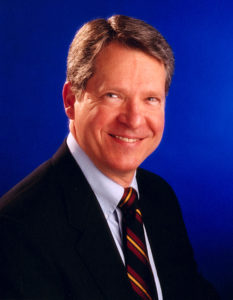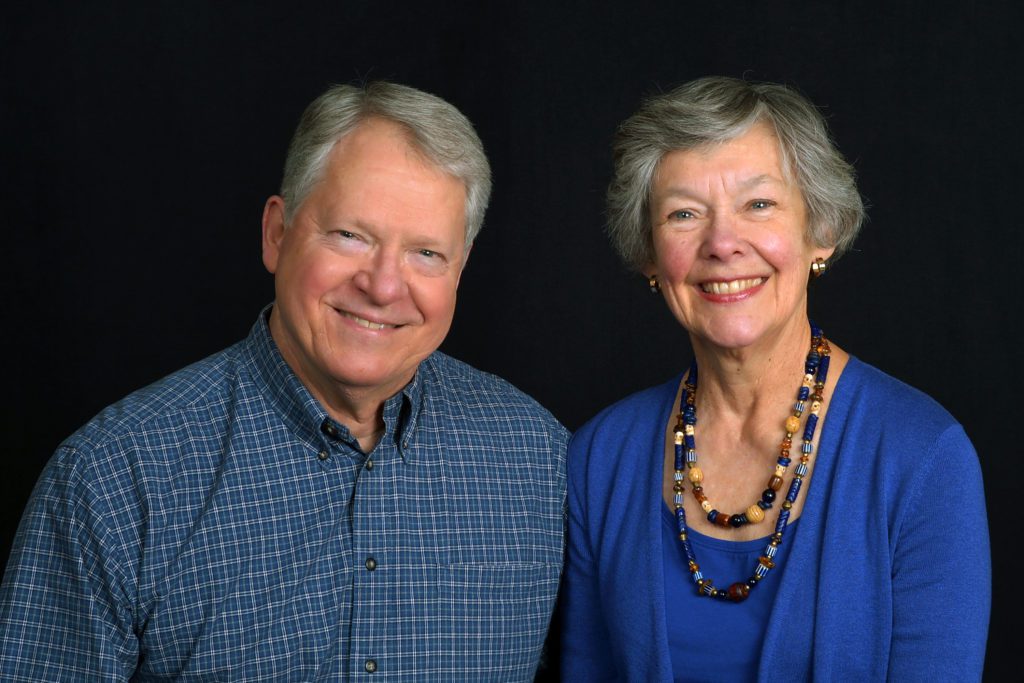Michael and Rebecca McGoodwin Endowment for Radiology Resident and Fellow Training and Education
Dr. Michael McGoodwin, UW Radiology Resident ’75, NucMed Resident ‘76, established a new endowment to support radiology resident and fellow training and education. The purpose of this endowed fund is to provide broad-based direct financial support to residents and fellows in the Department of Radiology.
Distributions from the Michael and Rebecca McGoodwin Endowment for Radiology Resident and Fellow Training and Education will be used to benefit residents and fellows in the Department, including residents within the disciplines of diagnostic radiology, interventional radiology, and nuclear medicine. Expenditures may include costs associated with resident and fellow education, and their participation in research and community service.
Support benefiting residents and fellows may also include acquisition of technology and equipment, use of educational facilities, conference attendance, and travel for residents and fellows.
Michael McGoodwin, M.D.
 I was very interested in the biological and physical sciences from an early age, and settled on Physics as my college major at Rice University, 1961–1965. During three of my summers while in college, I had the good fortune to be exposed to many fine researchers and physicians at the world-class medical research facility, M. D. Anderson Hospital and Tumor Institute in Houston. I worked in the Physics department under Robert Shalek, PhD.
I was very interested in the biological and physical sciences from an early age, and settled on Physics as my college major at Rice University, 1961–1965. During three of my summers while in college, I had the good fortune to be exposed to many fine researchers and physicians at the world-class medical research facility, M. D. Anderson Hospital and Tumor Institute in Houston. I worked in the Physics department under Robert Shalek, PhD.
The main emphasis there was radiation dosimetry and other types of support for radiation therapy procedures and devices, including two large betatrons. These summers were richly satisfying and planted the seed for radiology as an ideal means of blending my interest in physical science with a medical career. In medical school at Baylor College of Medicine (1965–1969), my interest in radiology grew through teaching by Magdalena Pogonowska, MD and Stewart Bushong, ScD, and I was also intrigued by the then separate field of nuclear medicine, which was vigorously promoted by its department head John Burdine, MD.
My internship (R1 year) at University of Colorado MC, 1969–1970, was in straight medicine. A subsequent two year tour in Alaska in the Indian Health Service of the Public Health Service (1970–1972) gave me time to mature further as a physician and solidify my desire to pursue diagnostic radiology.
I was pleased to be accepted into the University of Washington diagnostic radiology residency, which I attended from 1972 to 1975 for my R2 to R4 years. In the R4 year, I was honored to be appointed Chief Resident by department chairman Melvin Figley, MD, and I earned diagnostic radiology board certification in 1975. The radiology faculty and training at the UW were outstanding. They provided a diverse and thorough education, in part through rotations to many different hospitals—the UWMC, Children’s Orthopedic, PHS Hospital, VA MC, Harborview MC, etc.
I continued on to an R5 year of residency in Nuclear Medicine, 1975-1976, under department chair Wil Nelp, MD, and earned board certification in nuclear medicine in 1976. Technologies in UW Radiology were sophisticated for 1976, yet one had to go to Virginia Mason Hospital to see the first CT scanner in town, and the only ultrasound machine was located in the UW Obstetrics department. Nuclear medicine was expanding especially rapidly, and producing important and pioneering research.
I emerged from my residencies reasonably well equipped to enter the practice of diagnostic radiology and nuclear medicine, which I performed first in Bellingham (1976–1978) and subsequently in Seattle (1978–1994). I was head of diagnostic ultrasound and nuclear medicine for most of these years.
There was always much to learn, in order to grow with the rapidly expanding fields of diagnostic ultrasound, CT imaging, and other advancing modalities, so that frequent continuing education in my chosen fields was essential. Much of this teaching emanated from the better academic medical centers, including the UWMC, UCSF, and many other important centers of radiology progress.
For the most part, I practiced in teaching hospitals, especially Providence Medical Center Seattle, and during my years of clinical practice, I enjoyed teaching UW medical students and house staff through informal one-on-one contact, local conferences, symposia, etc.
I have maintained a strong interest in radiology training and continuing education. My education at the UW was very satisfying—I remain very grateful for it, and wish to return some of the benefit I received by contributing a modicum of tangible support to newer generations of UW radiology residents and fellows. Thus I am pleased to endow this fund, and wish these future residents and fellows all great success.
Rebecca McGoodwin
My late wife Rebecca was a biology major in college (1962–1966). She considered a medical career, and taught high school biology for several years, but she ultimately decided that she could better serve her family by supporting my career in radiology and being the principal manager of our home and children. She and my children benefitted substantially by the career I pursued, and it pleased me to be able to provide adequate support for them. But her support was absolutely essential to me, and she made possible whatever successes I enjoyed throughout my medical education and career.
In later life, Rebecca returned to college, this time at Seattle University (1988 to 1990), earning a second bachelor’s degree in diagnostic ultrasound. She became certified as a Registered Diagnostic Medical Sonographer, and practiced with me in diagnostic ultrasound for several years before my retirement. Rebecca died in July 2017.
We have both enjoyed giving back to the institutions that provided my medical education. She surely would have been proud to share in the formation of this endowment, and it is my hope that this fund will help to honor the memory and achievements of this great lady.
— Michael McGoodwin, M.D.
